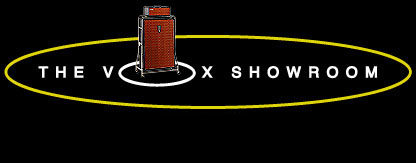The Vox Echo ReverberationThe "Vox Echo Reverberation" was the JMI response to the Fender Reverb Unit. The four tube circuit design for the Vox Echo-Reverb was detailed on JMI schematic #A62/005 dated January 30, 1962. A revised schematic (#OS/011) was produced in September 1964. The Vox Echo-Reverb first appeared in the
1962 Vox catalog and was last offered in the
1968 Vox Sound Equipment Limited catalog .
Unlike the single channel Fender Reverb Unit, the Vox Echo-Reverb featured a dual channel design with independent volume controls for each input.
The cabinet for the Vox Echo-Reverb was the size of a typical guitar head. The front panel of the Vox Echo-Reverb cabinet was designed to match the "split face" cosmetics of Vox combo amplifiers.
The earliest Vox Echo-Reverb cabinets were covered in fawn vinyl. A transition from fawn to smooth black vinyl occurred in 1963. By early 1964 the smooth black covering was replaced with black basket weave vinyl. This vinyl was used through the end of production. While many Vox Echo Reverb units had brown Vox grill cloth, black Vox grill was also used in later production.
Earlier units featured brass vents, copper control panels and swivel luggage style handles. By 1965 black plastic air vents, gray control panels and Vox logo strap handles were the norm.





